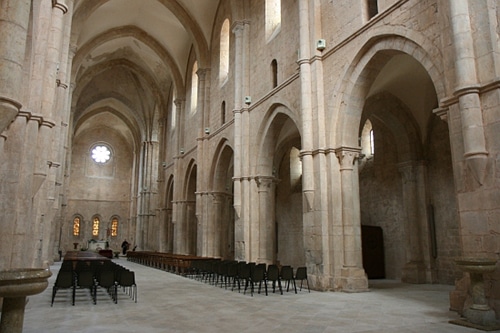I like the interiors of churches much more than their external facades. I like the feeling of peace, tranquility and something heavenly that reigns in them so I can easily discover how people felt in the Middle Ages when they left their poor houses to get into these kinds of buildings. The passage from one world to another. This church, for example, is like this: simple on the outside and inside but more beautiful inside than outside.
This is the Fossanova Abbey. It is located in the village of the same name and is a typical abbey of the Cistercian order. It is a clear example of his style of architecture, simple. The first monastery to be built in this place was Benedictine, on the remains of a Roman villa, in 529, but it was handed over to the Cistercian monks in 1135. They were the ones who built an effective canal to drain the area. The construction of the magnificent abbey then began in 1163 and was consecrated in 1208 by Pope Innocent III.
Today it is considered the clearest example of early Gothic architecture in Italy. Saint Thomas Aquinas visited her when he was ill and shortly before he died, on the way to the Council of Lyons. The inn where he stayed was converted into a chapel in the XNUMXth century. The Fossanova Abbey It was closed under Napoléon but was bought by Pope Leo XII and eventually became an active Franciscan abbey. What is today. The site is open every day from 7 am to 12 pm and from 4 to 7:30 pm. In winter it closes at 5:30 pm. Admission is free.


It is a very beautiful place, it brings back fond memories of my stay in Italy.